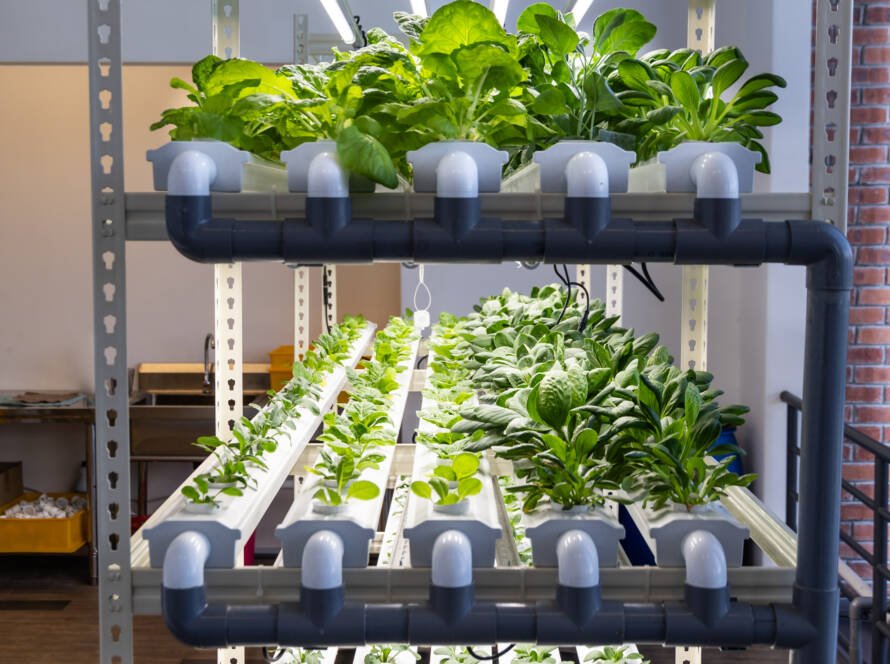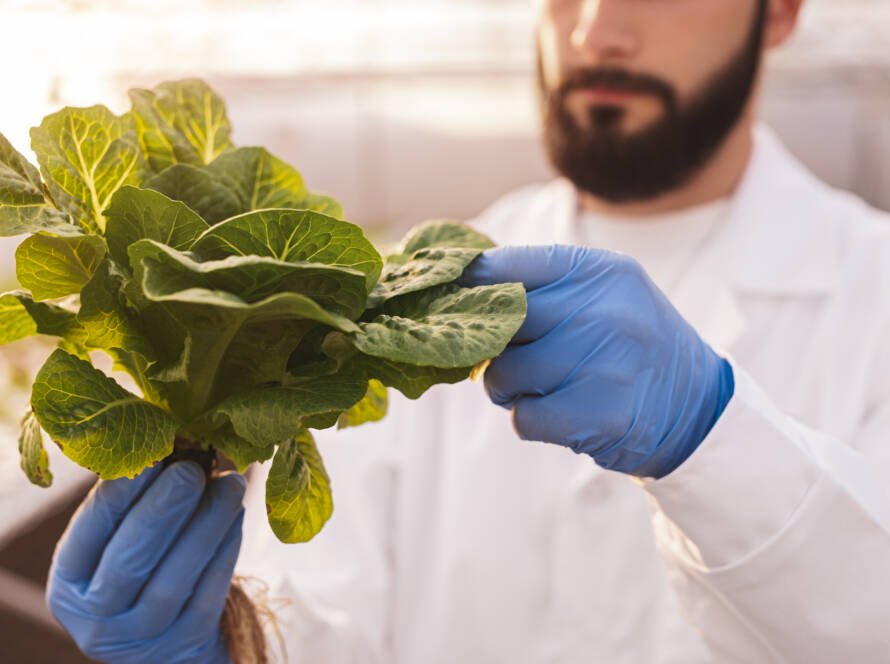Hydroponics can feel like a big topic, especially with all the different methods. Each has its pros, cons, and unique quirks, but they’re all designed to grow plants without soil, using nutrient-rich water instead. Whether you’re a beginner or a tech-savvy grower, there’s a system for you. Let’s explore the most popular hydroponic methods, plus one of the most fascinating options: aquaponics.
1. Nutrient Film Technique (NFT)
With NFT, plants sit in channels, and a thin stream of nutrient-rich water flows over their roots. It’s efficient and great for smaller, fast-growing plants.
- Best for: Leafy greens like lettuce and herbs like basil and parsley.
- Cost range: $100–$500 for a basic home setup.
- DIY ease: No. Requires pumps and proper design for water flow.
- Why it’s cool: It uses very little water, and you can grow a lot in a small space.
- Watch out for: Pump failures can dry out roots quickly.
2. Deep Water Culture (DWC)
This method suspends plant roots directly into a bubbly nutrient solution, keeping them hydrated and oxygenated.
- Best for: Lettuce, kale, strawberries, and even peppers.
- Cost range: $50–$200 for small setups, more for larger systems.
- DIY ease: Yes. A bucket, air pump, and net pots are all you need to get started.
- Why it’s cool: It’s beginner-friendly and delivers fast plant growth.
- Watch out for: Warm water can lead to root rot.
3. Drip Systems
Drip systems deliver nutrients directly to each plant in small doses. They’re popular for both hobbyists and commercial growers.
- Best for: Tomatoes, cucumbers, and flowering plants like peppers.
- Cost range: $200–$1,000+ depending on scale and automation.
- DIY ease: Yes. A basic drip system is straightforward to build.
- Why it’s cool: It’s scalable, so you can start small and expand later.
- Watch out for: Emitters can clog, and open systems waste water.
4. Ebb and Flow (Flood and Drain)
This system floods a plant tray with water and nutrients, then drains it, giving roots oxygen between floods.
- Best for: Herbs, leafy greens, strawberries, and flowers.
- Cost range: $100–$500 for small systems.
- DIY ease: Yes. DIY kits and tutorials make it accessible.
- Why it’s cool: It mimics natural watering cycles, which plants love.
- Watch out for: Timer or pump failures can disrupt the cycle.
5. Aeroponics
Aeroponics suspends plants in air while their roots are misted with a nutrient solution. It’s efficient and futuristic.
- Best for: High-value crops like microgreens, herbs, and experimental varieties.
- Cost range: $300–$2,000 for advanced setups.
- DIY ease: No. The system requires specialized components and precise timing.
- Why it’s cool: It uses minimal water and nutrients while maximizing growth.
- Watch out for: Nozzles can clog, and system failures affect plants quickly.
6. Wicking Systems
A simple system where a wick pulls water and nutrients from a reservoir to plant roots.
- Best for: Lettuce, spinach, and herbs like cilantro.
- Cost range: $20–$100.
- DIY ease: Yes. It’s one of the easiest setups to create at home.
- Why it’s cool: It doesn’t require electricity or pumps, making it perfect for beginners.
- Watch out for: It’s not suitable for water-hungry or large plants.
7. Kratky Method
The Kratky method is the ultimate no-fuss hydroponic setup. Plants grow in a static nutrient solution.
- Best for: Leafy greens, herbs, and smaller crops.
- Cost range: $20–$50.
- DIY ease: Yes. It’s as simple as a container, water, and nutrients.
- Why it’s cool: No pumps, no moving parts—just set it up and wait for the harvest.
- Watch out for: It’s not scalable and requires close monitoring of water levels.
8. Aquaponics
This is the fascinating one! Aquaponics combines fish farming with hydroponics. Fish waste provides nutrients for the plants, while the plants filter the water for the fish. It’s a symbiotic system.
- Best for: Leafy greens, herbs, and low-maintenance crops like Swiss chard.
- Cost range: $300–$1,500 for small systems.
- DIY ease: Yes, but it’s more complex than other setups. You’ll need to balance fish, plants, and water quality.
- Why it’s cool: It’s eco-friendly and creates a mini ecosystem in your home or yard.
- Watch out for: Maintaining the fish and balancing the system requires attention and patience.
Let’s Compare!
| Method | Best For | Cost Range | Easy DIY? | Pros | Cons |
|---|---|---|---|---|---|
| NFT | Lettuce, basil, spinach | $100–$500 | No | Efficient, minimal water use | Clogs and pump failures |
| DWC | Lettuce, kale, strawberries | $50–$200 | Yes | Simple setup, rapid growth | Warm water risks root rot |
| Drip Systems | Tomatoes, peppers, cucumbers | $200–$1,000+ | Yes | Customizable and scalable | Emitters can clog |
| Ebb and Flow | Herbs, strawberries, flowers | $100–$500 | Yes | Mimics natural cycles, versatile | Timer or pump issues |
| Aeroponics | Herbs, greens, microgreens | $300–$2,000 | No | High efficiency, minimal resource use | Tech-heavy, costly setup |
| Wicking Systems | Lettuce, spinach, herbs | $20–$100 | Yes | Low-cost, no electricity needed | Limited to small, low-demand plants |
| Kratky Method | Leafy greens, herbs | $20–$50 | Yes | No electricity, simple setup | Not scalable, water needs monitoring |
| Aquaponics | Leafy greens, herbs, chard | $300–$1,500 | Yes | Eco-friendly, self-sustaining system | Requires fish care and water balance |
Wrapping It Up
Hydroponics is an exciting way to grow plants, whether you’re just starting with a few herbs or building a full-scale system. If you’re into simplicity, try the Kratky or Wicking system. Love tech? Aeroponics is your playground. For something unique, aquaponics offers the satisfaction of growing plants and raising fish in harmony.
What plants are you excited to grow? Leafy greens, juicy tomatoes, or something entirely new? Whatever you choose, hydroponics opens the door to fresher food and fun experimentation!


